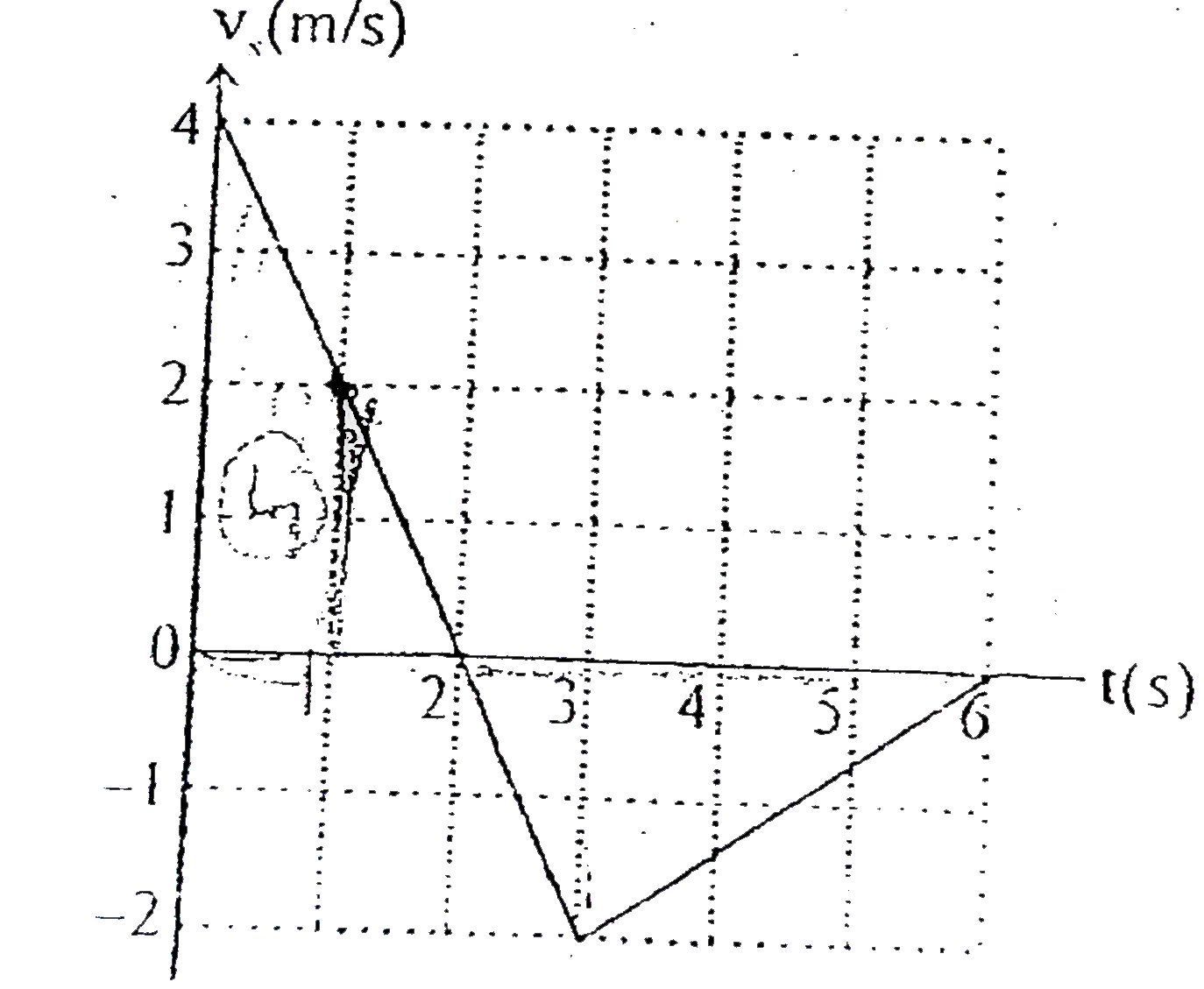A 2kg toy car can move along an x axis. Graph shows force Fx , acting on the car which being at rest at time t=0 . The velocity of the particle at t=0s is:

−im/s
−1.5im/s
6.5im/s
13im/s
The correct Answer is:C
∫dp=pf−pi=∫Fdt
=Area under the curve.
pi=0
Net Area =16−2−1=13N−s
=Vf=132=6.5im/s
[As momentum is position, particle is moving along positive x axis.]
Topper's Solved these Questions
- NEWTONS LAWS OF MOTIONBook:A2ZChapter:NEWTONS LAWS OF MOTIONExercise:Equilibrium Of A Particle
Explore 19 Videos
- NEWTONS LAWS OF MOTIONBook:A2ZChapter:NEWTONS LAWS OF MOTIONExercise:Applications Of Newton'S Laws Of Motion
Explore 33 Videos
- NEWTONS LAWS OF MOTIONBook:A2ZChapter:NEWTONS LAWS OF MOTIONExercise:Chapter Test
Explore 30 Videos
- MOTION IN TWO DIMENSIONBook:A2ZChapter:MOTION IN TWO DIMENSIONExercise:Chapter Test
Explore 29 Videos
- OSCILLATION AND SIMPLE HARMONIC MOTIONBook:A2ZChapter:OSCILLATION AND SIMPLE HARMONIC MOTIONExercise:Chapter Test
Explore 29 Videos
Similar Questions
A time varying force, F=2t is acting on a particle of mass 2kg moving along x-axis. velocity of the particle is 4m/s along negative x-axis at time t=0. Find the velocity of the particle at the end of 4s.
View SolutionThe acceleration-time graph of a particle moving along x-axis is shown in the figure. If the particle starts with velocity 3 m/s at t = 0, find the velocity of particle at t = 4 s.

View Solution
Knowledge Check
vx is the velocity of a particle moving along the x-axis as shown in the figure. If x=2.0m at t=1.0s, what is the position of the particle at t=6.0s ?
 A−2.0 mB+2.0 mC+1.0 mD−1.0 m
A−2.0 mB+2.0 mC+1.0 mD−1.0 mA particle moves along x-axis in such a way that its r-coordinate varies with time't according to the equation x= (8−4t+6t2) metre. The velocity of the particle will vary with time according to the graph
A B
B C
C D
D
A particle moves along x-axis in such a way that its x-coordinate varies with time t according to the equation x=(8−4t+6t2) metre.
The velocity of the particle will vary with time according to the graph :-A B
B C
C D
D
A particle starts from the origin at time t = 0 and moves along the positive x-axis. The graph of velocity with respect to time is shown in figure. What is the position of the particle at time t = 5s ?

View SolutionA particle can move along a straight line. It is at rest when a force (F) starts acting on it directed along the line. Work done by the force on the particle changes with time(t) according to the graph shown in the fig. Can you say that the force acting on the particle remains constant with time?

View SolutionA car moves along an x axis through a distance of 900 m, starting at rest ( at x=0) and ending at rest ( at x=900m). Through the first 14 of that distance, its acceleration is +2.75m/s2. Through the rest of that distance, its acceleration is −0.750m/s2. What are (a) its travel time through the 900 m and (b) its maximum speed ? (c) Graph position x, velocity v, and acceleration a versus time t for the trip.
View SolutionTwo cars, A and B move along the x-axis. Car A starts from rest with constant accelertion while car B moves with consstant velocity.
a. At what time s, t s, if any, do A and B have the same position?
 .
.
b. At what time s if any, do A and B have the same velocity? What is the velocity of car B at this time.
c. Graph velocity versus time for both A and B.
d. At what time s. If any, does car ApasscarA?<br>e.Atwˆtimes,ifanydoescarBpasscarA?
View SolutionVx is the velocity of a particle of a particle moving along the x−axis as shown. If x=2.0m at t=1.0s, what is the position of the particle at t=6.0s?

View Solution

